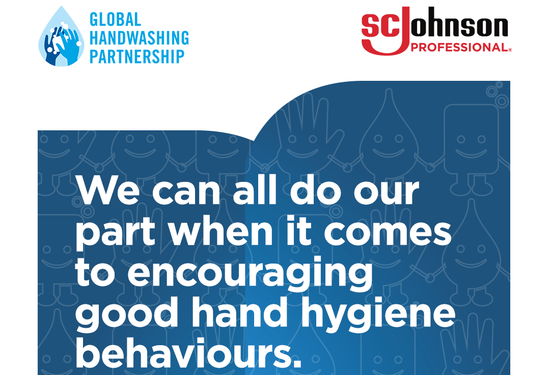Building a culture of safety this World Hand Hygiene Day
Over the past couple of years, we have all become more aware than ever before of the importance of good hand hygiene. But how can promoting best practice when it comes to hand washing and sanitising help you create a climate and culture focused on the protection of patients and staff in your healthcare facility?
As a member of the Private Organisation for Patient Safety (POPS) group, we collaborate with the World Health Organisation (WHO) to share information, progress our shared aims for patient safety and promote the implementation of WHO recommendations around the world, including the ‘5 Moments for Hand Hygiene’.
The WHO’s World Hand Hygiene Day on the 5th May aims to maintain a global focus on the importance of hand hygiene in healthcare and beyond and to help you ensure that your patients and staff feel protected and cared for. As a member of POPS, we want to help do all we can to support this annual campaign and, together, help you raise awareness of hand hygiene and build a culture of compliance to improve patient safety.
Hand hygiene as we adjust to a post-pandemic stage
In 2022, we find ourselves in a unique position. As we adjust to life in a post-pandemic world, how do we help you ensure that good hand hygiene practice remains high on the agenda? High levels of compliance are needed from your staff, in order to help reduce the risk of the Healthcare Associated Infections (HCAIs) that existed long before the pandemic. Good hand hygiene helps to build a culture that promotes patient safety.
This World Hand Hygiene Day, we want to help you carry through the learnings from the past couple of years into ongoing safety protocols and everyday life.
Building a culture of safety with hand hygiene best practice
Everyday working life can bring healthcare professionals into contact with a range of germ hotspots, whether your staff work in a hospital or a community care home. Hand hygiene is one of the most effective and affordable ways to help protect your staff by reducing the risk of transmission of germs and creating safety-focused cultures in your healthcare facility.
We recommend your staff carry out hand hygiene in line with the WHO’s ‘5 Moments for Hand Hygiene’ when caring for patients. These moments identify when healthcare professionals should perform hygiene actions and give guidance on when the hands should be washed and when they should be sanitised. To help you and your staff carry out best practice at each of these moments, here is our recommended advice.
Hand washing
-
Hands should be washed regularly and especially before and after eating, after touching potentially contaminated surfaces such as door handles or light switches, and after coughing or sneezing and using the washroom.
-
A good hand washing technique needs to be employed in order to clean the hands thoroughly and thus reduce the risk of further spread of germs.
-
Hand washing is a key aspect of hand hygiene, visibly removing soiling from the hands as well as high levels of bacteria and viruses when carried out correctly.
Our POPS representative and Global Research, Development and Engineering Director Dr John Hines, D.Phil added: “As a general rule, washing your hands with soap and water when removing visible soiling will provide adequate hygiene protection. There are lots of times when hand hygiene is indicated in healthcare environments but your hands aren't visibly soiled, or soap and water isn't available. This is when to use an alcohol-based hand sanitiser. Don’t use hand sanitiser if your hands are visibly dirty or greasy, wash your hands with soap and water instead.”
Hand sanitising
-
As with hand washing, proper technique is needed when using sanitisers.
-
Sanitisers should only be used when the hands are not visibly soiled1.
-
Enough product should be applied to keep hands wet for 20-30 seconds.
-
A palmful of product should be used – or, enough to cover the entire hands.
Dr John Hines, D.Phil added: “Alcohol based sanitisers work by killing germs at the time of application when used as directed, therefore it is important to sanitise your hands at the key moments when the risk of transmission of germs is high, as defined for healthcare scenarios by the WHO ‘My 5 Moments for Hand Hygiene’. It's important to stick to the 5 moments to ensure patient safety and not to rely on any residual effect, even when a product may claim to provide it.”
We can help support you and your staff with dedicated resources and training materials for healthcare environments. Or simply get in touch for more information or a free site survey.



